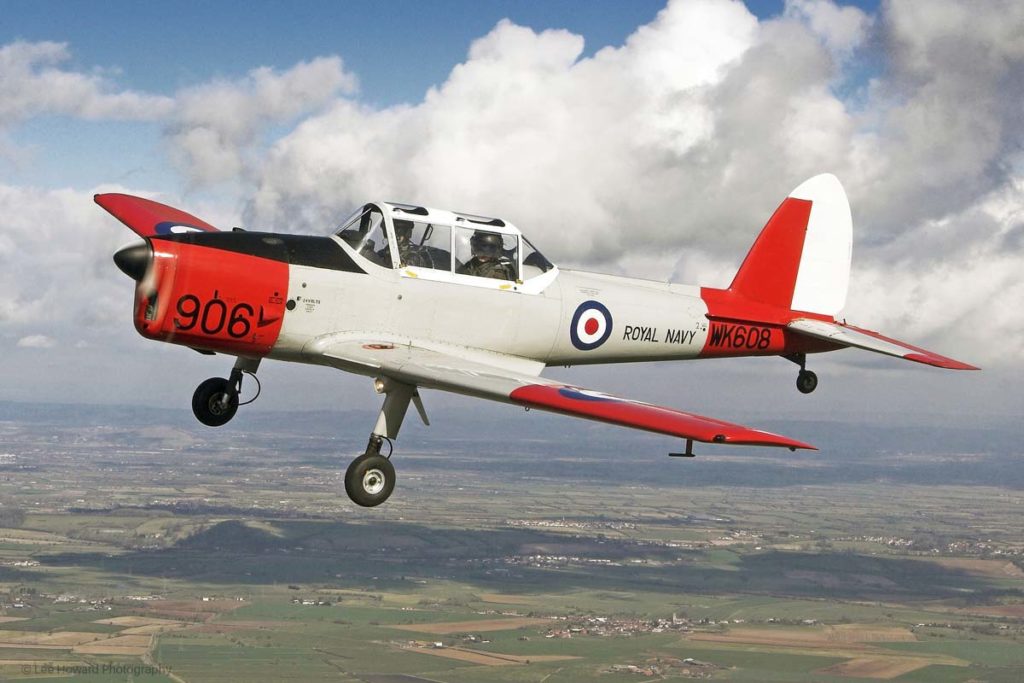Royal Navy Aviation
With maritime patrol and most shore based tasks under the responsibility of the RAF, the key focus of naval aviation in the RN is ship based aircraft. Organized as the Fleet Air Arm (FAA), the roles can then be broken down further into 1) Carrier based, 2) Escort based, 3) Amphibious and 4) Training and support.
Some changes have been made to the squadron organization to accommodate the modifications in the Northern Fury storyline. For instance, three carrier air groups are maintained vice the two historically, this was done using unallocated aircraft which existed, specific cases such as augmenting with RAF Harriers on occasion, and where needed acquiring or converting more airframes then actually existed.
Carrier based Aviation
The three RN aircraft carriers were small and therefore limited in the size of air group they could carry and maintain. Therefore, there were only two airframes normally deployed, the Sea Harrier and the Sea King, although three different models of Sea King were used.
Sea Harrier FA.2 (FRS.2)
The famous British Sea Harrier of Falkland Islands fame was the FRS.1, although lauded as the hero of the war, it was found wanting on many levels. Actual development of the much improved FRS.2 started in 1985 and first flew in ’88, deployment however was slow, mostly due to budgetary constraints. Conversion of FRS.1 started in 1995 and completed in 1997 with new build arriving between 1995 and 1998. In Northern Fury, conversion and new build began in 1991 and was completed by the end of 1993. The FRS.2 (or FA.2) have the capability to fire the Aim 120 AMRAAM air to air missile as well as precision strike ground attack munitions. Of the 51 Sea Harriers available, plus seven converted ‘T Mark 8’ training aircraft, the RN in Northern Furry maintain three operational Harrier squadrons and one training Squadron, with land bases at Cottesmore and Yeovilton.
| Sqn | Task | Location | No | Type | Remarks |
|---|---|---|---|---|---|
| 800 | Invincible | Cottesmore | 12 | Harrier FA.2 | |
| 801 | Ark Royal | Yeovilton | 12 | Harrier FA.2 | |
| 802 | Illustrious | Cottesmore | 12 | Harrier FA.2 | |
| 899 | Training | Yeovilton | 12 | Harrier FA.2 | +7 T.8 |
| NA | Warstock | Yeovilton | 3 | Harrier FA.2 |
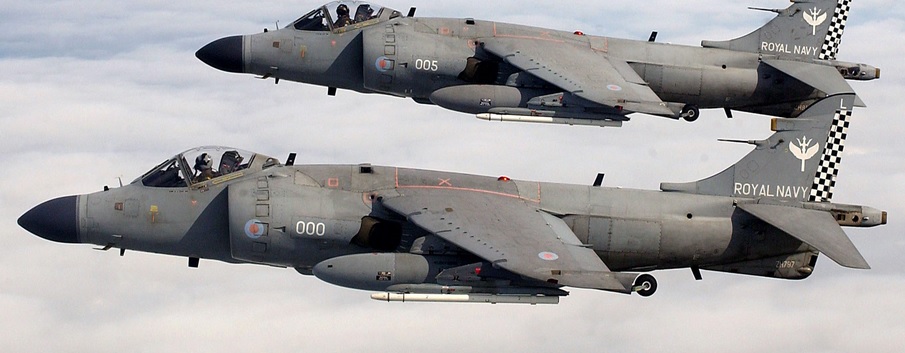
Note, the FRS.2 was re-designated FA.2 in the mid ‘90s, changing from ‘Fighter, Reconnaissance, Strike’ to simply ‘Fighter Attack’. In Northern Fury the FA.2 designation is used.
Sea King (HAS.6, AEW.2, HAR.3, HC.4)
The other routine member of the carrier air group is the Westland Sea King. Usually there are a total of 10 on board including: Six Anti-Submarine Warfare (ASW) versions, the HAS.6 (Helicopter Anti-Submarine Mark 6); two Airborne Early Warning (AEW) versions, the AEW.2A, and two Search and Rescue (SAR) versions, the HAR.3 (Helicopter Air Rescue Mark 3). These come form a variety of squadrons and are the workhorses of the fleet.
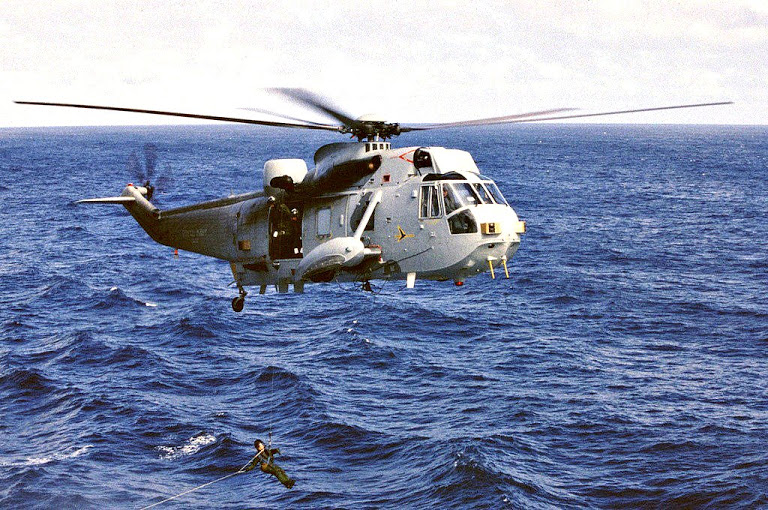
The fourth version of the Sea King in use with the RN was the Cargo/Troop carrying version used for Amphibious operations, the HC.4. In total there were 146 Sea Kings in the RN broken down by type as follows:
76x HAS.6
10x AEW.2A
35x HC.4
19x HAR.3
6x HAR.3A (new build)
The only changes due to Northern Fury is some minor reorganization and the early purchase of 6x HAR.3A for shore based SAR. Squadron dispositions are:
| Sqn | Task | Location | No | Type | Remarks |
|---|---|---|---|---|---|
| 22A | Shore Based SAR | Chivenor | 2 | Sea King HAR.3 | |
| 22B | Shore Based SAR | Wattisham | 2 | Sea King HAR.3 | |
| 22C | Shore Based SAR | Valley | 2 | Sea King HAR.3 | |
| 202A | Shore Based SAR | Boulmer | 2 | Sea King HAR.3A | |
| 202B | Shore Based SAR | Lossiemouth | 2 | Sea King HAR.3A | |
| 202C | Shore Based SAR | Leconfield | 2 | Sea King HAR.3A | |
| 706 | Training | Culdrose | 12 | Sea King HAS.6 | |
| 707 | Training | Yeovilton | 12 | Sea King HC.4 | |
| 771 HQ | Training | Culdrose | 2 | Sea King HAR.3 | |
| 771B | Ark Royal | Culdrose | 2 | Sea King HAR.3 | |
| 771A | Invincible | Culdrose | 2 | Sea King HAR.3 | |
| 772 HQ | Training | Portland | 2 | Sea King HAR.3 | |
| 772A | Illustrius | Portland | 2 | Sea King HAR.3 | |
| 772B | RFA's | Portland | 2 | Sea King HAR.3 | |
| Warstock | Culdrose | 1 | Sea King HAR.3 | ||
| 810 | Training | Culdrose | 12 | Sea King HAS.6 | |
| 814 | Ark Royal | Culdrose | 6 | Sea King HAS.6 | |
| 819 | ASW Holding unit | Prestwick | 12 | Sea King HAS.6 | |
| 820 | Illustrius | Prestwick | 6 | Sea King HAS.6 | |
| 824 | Invincible | Prestwick | 6 | Sea King HAS.6 | New Sqn |
| 826 | RFA's | Prestwick | 6 | Sea King HAS.6 | |
| Warstock | Culdrose | 16 | Sea King HAS.6 | ||
| 845 | LPDs | Yeovilton | 8 | Sea King HC.4 | |
| 846 | LSLs/RFA’s | Yeovilton | 8 | Sea King HC.4 | |
| Warstock | Yeovilton | 7 | Sea King HC.4 | ||
| 849 | HQ & Trg | Culdrose | 3 | Sea King AEW.2A | |
| 849A | Invincible | Culdrose | 2 | Sea King AEW.2A | |
| 849B | Illustrious | Culdrose | 2 | Sea King AEW.2A | |
| 849C | Ark Royal | Culdrose | 2 | Sea King AEW.2A | New Flt |
| Warstock | Culdrose | 1 | Sea King AEW.2A |
Escort Based Aviation
All Destroyers and Frigates in the fleet are equipped with a single type of ASW aircraft, the Westland Lynx. This is a very capable ASW platform used by the RN, the Germany Navy, the French Navy, the Netherlands, Norway, Portugal and many non-NATO countries. The RN has largely upgraded to the HAS.3 versions which is capable of Anti-Surface as well as Transport and ASW tasks, although there are still some HAS.2 remaining on older ships. Additionally, in service HAS.3’s are being upgraded to HMA.8’s or Super Lynx with larger engines, new avionics and better sensors. At the start of Northern Fury there are 12x HAS.2 on the older Leander Frigates, 77x HAS.3 and HAS.3GM (with additional radios for the Gulf War), and 18 HMA.8’s. One additional Sqn has been added in Northern Fury but the overall numbers are only increased by the retention of the older HAS.2 in order to equip the older FF which were retained.
| Sqn | Task | Location | No | Type | Remarks |
|---|---|---|---|---|---|
| 702 | Training | Portland | 18 | Lynx HAS.3/GMA.8 | |
| 815 | Surface DD & FF | Portland | 24 | Lynx HAS.3/GMA.8 | |
| 825 | Surface DD & FF | Portland | 24 | Lynx HAS.3/.3GM | New Sqn |
| 847 | Surface DD & FF | Portland | 24 | Lynx HAS.2/.3GM | |
| Warstock | Portland | 17 |
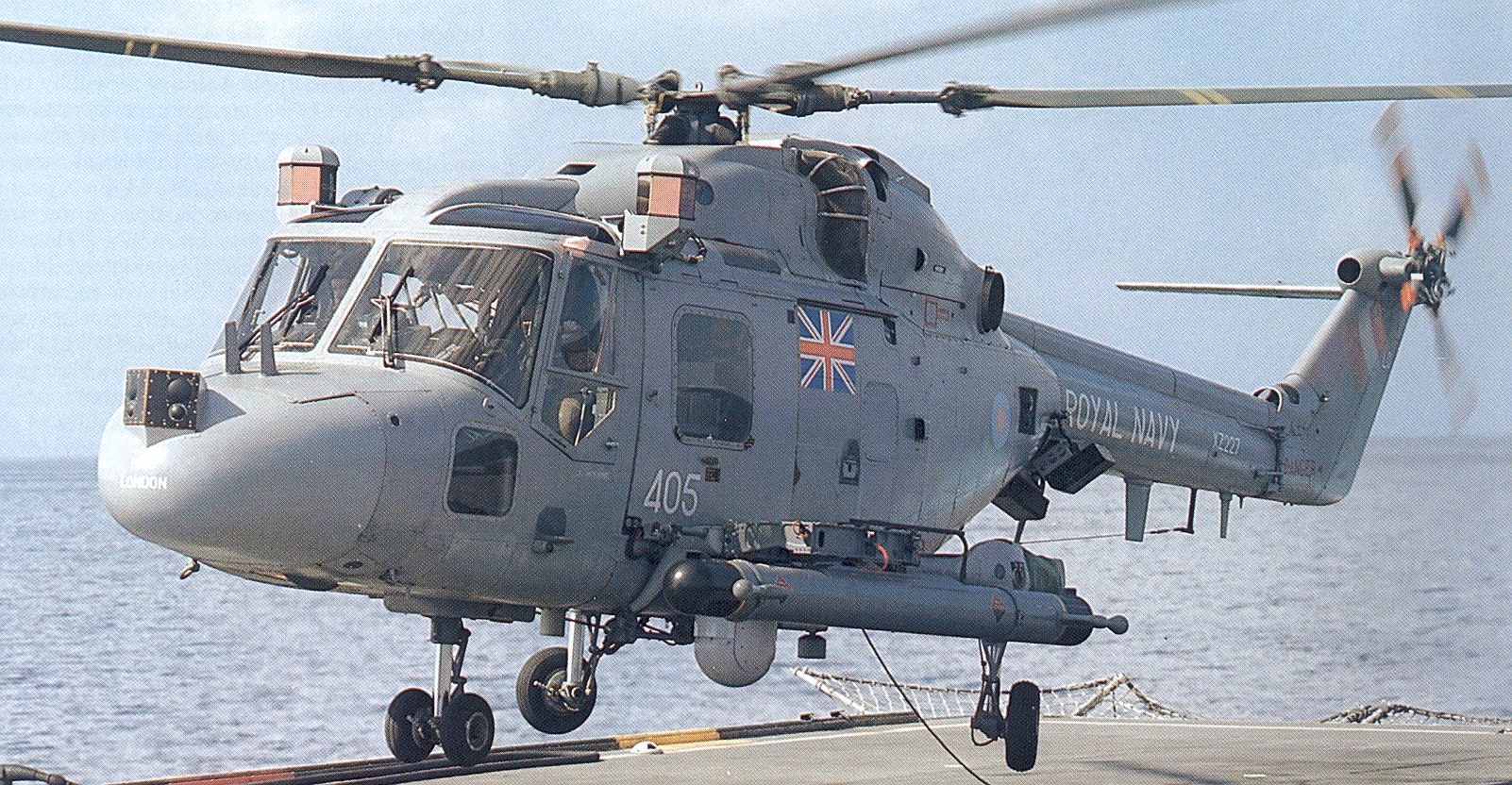
Amphibious Forces Aviation
Beside the Sea King HC.4’s discussed earlier, the key equipment for use by the Royal Marines in amphibious operations was the Westland Gazelle AH.1. These 12 Gazelle were operated by the Army Air Corps (AAC) 3 Command Brigade Air Squadron (CBAS) which also operates six Lynx AH.1 in support of 3 Commando Brigade. These helicopters would be embarked on amphibious ships based on the requirements of the operation, depending on the situation not all would be embarked but in theory the AAC could provide more if the threat demanded it. The other main use for the Gazelle was basic helicopter training for all other helicopter types using the HT.2.
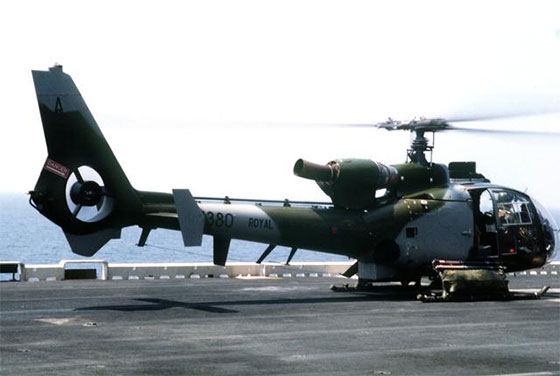
| Sqn | Task | Location | No | Type | Remarks |
|---|---|---|---|---|---|
| 705 | Flight training | Culdrose | 30 | Gazelle HT.2 | |
| 3 CBAS | Cdo Bde Air Sqn | Yeovilton | 12 | Gazelle AH.1 | AAC |
| 3 CBAS | Cdo Bde Air Sqn | Yeovilton | 6 | Lynx AH.1 | AAC |
Training and support
The RN fielded a full suite of training squadrons to bring pilots from the very basic level in the Chipmunk, through basic jet training in the Hawk (see RAF) and basic helicopter training in the Gazelle, and finally training on the type the pilot would be assigned to. Training did not end there as all units conducted refresher and qualification training.
For support the RN had a small fleet of executive jets and small aircraft for transporting personnel and to and from operational deployments or evacuating medical casualties.
